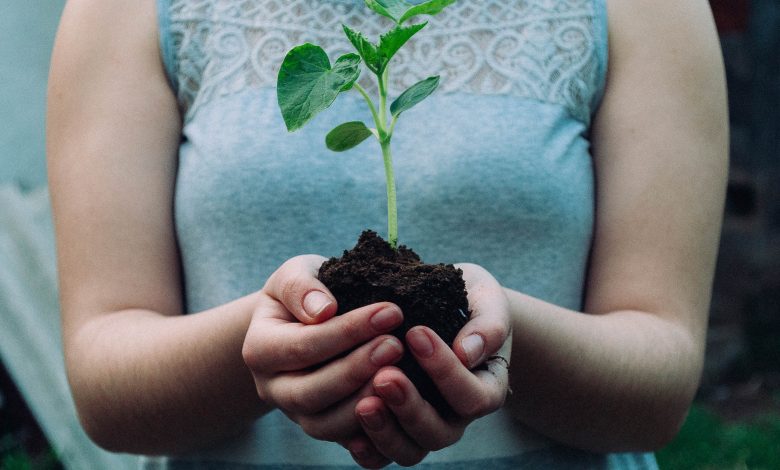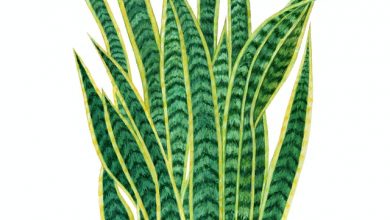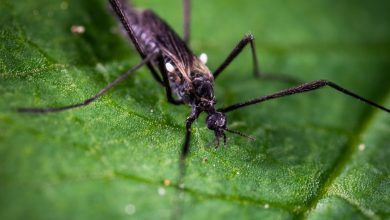How to Improve Your Garden Soil

Why Is Soil So Important?
Ideal garden soil will have plenty of macronutrients and micronutrients. Potassium, phosphorus, nitrogen, magnesium, calcium, and sulfur are macronutrients, which are consumed by plants in larger quantities, the first three being the main ones.
On the other hand, micronutrients include chloride, manganese, boron, zinc, copper, and molybdenum. Though consumed by plants in smaller amounts, they are equally as important as the batch of macronutrients that we just covered.
So the bottom line? Both macro and micronutrients play a significant role in plant nourishment!
But before we dive into the secrets of creating the perfect soil, you will need to figure out how good your soil is to start.

Testing Your Soil
There are two main ways that you can check your soil. You can use a home soil test kit, which can be purchased from Amazon, or you can have your soil tested in a lab. Many universities will have a garden lab to check your dirt for you.
Regardless of the testing method, you will now have a clear picture of the nutrients you need to add to your soil. Here is a quick guide on how you can quickly improve your soil depending on the nutrients that are missing:
- Low Nitrogen: Add blood meal, legume cover crops, or fish emulsion
- Low Phosphorus: Add bone meal or rock phosphate.
- Low Calcium: Add lime, wood ash, gypsum, or oyster shells
- Low Magnesium: Add dolomitic lime or Epsom salts
- Low Potassium: Add wood ash or composted banana peels
Improving The Soil In Your Garden
Composting
Harvesting your crops is not the end of the cycle. You have to go back to sowing once again, but it is not totally square one. You can skip the grueling process of starting over by maintaining the soil used in growing your previous harvests. Composting is key.
Every year, make sure you add around two inches of compost to your garden. While you could saunter down to the garden store and pick up a bag of ready-made compost, going organic is still the best way to go.
Below are the recommended compost ingredients according to nutrients:
Carbon:
- Boxes
- Cardboard
- Corn cobs
- Cotton and wool cloth
- Dry leaves
- Eggs
- Envelopes
- Lint
- Old crackers
- Old jeans
- Paper napkins
- Paper plates
- Paper towels
- Peat moss
- Pencil shaving
- Pet fur
- Pine needles
- Post-it notes
- Sawdust
- Shredded bills
- Shredded newspapers
- Stale bread
- Tissue
- Tissue cores
- Tree barks
- Wood chips
Nitrogen:
- Cow, goat, and chicken manure
- Feathers
- Fish or bone meal
- Fruit peels
- Grass clippings
- Hair
- Hay
- Leftover fish and vegetables
- Leftover fruit
- Rabbit pellets and droppings
- Seaweed
- Teabags
- Tofu

Beneficial Insects
Not all insects should be driven away from your garden. A gardener should know how to discern pests from potential pets. There are beneficial insects that can do the repelling job for you. For example, ladybugs, braconid wasps, damsel bugs, aphid midges, ground beetles, minute pirate bugs, and green lacewings are friendly insects. These insects can eat aphids, caterpillars, cabbage worms, mites, mealybugs, whiteflies, spider mites, slugs, and even Colorado potato beetles.
These pets can visit your garden naturally on their own. The easiest way is to add flowers and plants that attract their attention. You have to create a natural habitat for them to ensure they have everything they need to thrive. Otherwise, they may leave your garden in search of greener pastures.
Plant Cover Crops
One of the best ways to increase the level of nutrients in your soil is to simply plant cover crops, such as clover, alfalfa, peas, and beans. These specific types of plants are great for your garden soil, as they can take nitrogen from the atmosphere and make it available for the plants in your garden.
A great way to include cover crops in your garden is to divide your garden into parts. One section of the garden will be devoted to your vegetables. In contrast, the other section will be comprised of these types of cover crops. The following year, rotate the two sections. This will make sure that there are plenty of nutrients in the soil year over year.
Add Mulch to Your Garden
Is there anything that volt cannot do? As a gardener, you’ve likely used vault on numerous occasions, so it should be no surprise to see it here on this list for improving your soil. Adding mulch to the base of your plants will help them retain moisture and any precious nutrients they may come into contact with.
Another bonus for adding mulch to your garden is it helps keep the soil around your plants cool. This will also prevent your plants from drying out and getting dehydrated. Mulch is relatively inexpensive and easy to obtain, so it is a definite must for any garden.
Only Work in Dry Conditions
After a long rainstorm, you may be anxious to get out into your garden and tend to your beautiful plants. Unfortunately, this is not a great idea! Working while the soil is still wet can cause some significant issues for the long-term quality of your earth. When you walk on wet soil, you will end up compressing the surface, which removes the air from the soil. This is the last thing that you will want to do, as oxygen is crucial for your plants’ success.
So how do you know if the soil is too wet? All you need to do is squeeze a ball of soil. If water leaks out, then you need to wait a couple of days or maybe even a week before tending to your garden.
Keep Off Your Soil
Similar to the last point, it is important not to walk on your soil. Creating walkways between the rows of plants is essential for protecting the soil that your plants rely on. Without specific pathways, you’ll end up compressing the oxygen out of the earth as you step on it.
As a gardener, we work so hard to keep our soil aerated, so we don’t want to see all that effort wasted because we are walking on our soil. Whether you have a raised bed garden or a traditional garden, always be aware of where you step.
Break Out The Wood Chipper
Pruning season provides us with an excellent opportunity to improve the health of our garden soil. After you pruned all of your trees and shrubs around your yard, make sure you keep all the clippings. Simply place the cuttings inside your trusty wood chipper and turn the excess branches and sticks into a fine, thin mulch material.
All you have to do now is add this new mulch into your soil. It will break down throughout the winter months, giving you wonderfully healthy soil just in time for the spring plant.

Leaves For The Win
Much like the excess sticks from your yard, you can also use those pesky leaves to improve your soil. After raking leaves, you can choose to place them in your woodchipper with the other debris to make an excellent fine mulch for your garden.
If you don’t have a wood chipper, then all you need to do is pass over the leaves with your lawnmower a few times. This little trick should break down the leaves into a perfect garden mulch material. Now all you need to do is spread them over your garden.
Even Your Soil Needs Its Morning Cup of Joe
Much like you, your garden can also use a cup of coffee. Instead of throwing out your leftover coffee grounds, spread them throughout your garden. The used coffee grounds have a touch of acidity to them, so this makes it especially perfect if your soil is alkaline.
All you need to do is put the coffee grounds into your soil, and it will give it the balance that it needs while delivering the proper nutrients for your garden plants.
Wood Ash
The ash from your fireplace has a high amount of potassium and calcium, as well as other micronutrients. It not only provides nutrients to your soil, but it will also help balance the pH. Adding wood ash to your soil will bring the acidity down and create a more alkaline soil. Naturally, you will not want to add wood ash to your soil if you are growing acidic loving plants such as blueberries.
Hay or Straw
If you are looking for a quick and easy way to add a large volume of green matter to your soil, then hay or straw is the answer. Straw works great by laying it on top of your soil, and as it decomposes, it turns into wonderful nutrients that your plants will love using.
Typically, fresh straw bales can be quite costly, but many farmers will be looking for people to take away their old, moldy hay bales. This provides you with an excellent and economical way to add more nutrients to your garden bed.
Now, you might be thinking that hay bales are going to be full of weed seeds. This is a valid concern, which is why we recommend letting the hay bales sit for a few months. This will allow any seeds hiding in the hay to sprout while it breaks down a little. Alternatively, you can just lay the hay on your soil during the fall, letting it rot over the winter and creating nutrient-rich soil for the spring.

Manure
This may be one of the most common methods for spiking the nutrient levels in your soil, and for good reason, as it works very well. It is always best to use composted or older manure as your fertilizer. If the manure is too fresh, then it can burn the plants, which is not ideal, to say the least.
Let’s take a look at the various types of manure that you can use in your garden:
Horse Manure
It is pretty easy to get your hands on horse manure, but this type of fertilizer may contain the highest density of weed seeds. As such, you will definitely want to let horse manure compost for a while to hopefully kill off the weed seeds.
Chicken Manure
Chicken manure is full of nitrogen, which is great for your soil. As a result, this is typically one of the more dangerous types of manure to apply when it is fresh. You certainly need to let chicken manure compost or age for a while before mixing it into your soil.
Goat or Sheep Manure
These are not as common, but they are two of the best to work with. Typically, goat manure isn’t quite as pungent as other types of manure and is generally more gentle on your plants. It isn’t as dangerous as chicken manure, so it doesn’t need to age quite as long.
Cow Manure
When you think of using manure in your garden, you are likely picturing cow manure. This is for a good reason, as cow manure is the best all-purpose natural fertilizer out there. It has a lower nitrogen level, so it won’t burn your plants, and it also contains fewer weed seeds than horse manure. It is easy to see why this is the popular choice for naturally fertilizing your garden.
Rabbit Manure
This is the one exception to our “never put fresh manure in your garden” rule. You never have to worry about rabbit manure burning your plants, so feel free to mix them into your soil whenever you want. The other beautiful thing about rabbit manure is how easy it is to apply to your garden. Just pick it up (probably best to wear gloves) and sprinkle all over your garden. As it breaks down, the nutrients will be released into your soil.
At the end of the day, it will likely come down to what type of manure you can easily and regularly get your hands on. Each type of manure has its pros and cons, but they will all do the trick for improving the nutrient content of your soil.
Worms
When it comes to improving your soil quality, worms are here to help. There are a few different ways the worms can increase your soil’s nutrient levels.
Add Worms Directly to Your Garden
To make this work, all you need is a little compost, mulch, and some helpful worms. The worms will help aerate your soil and leave their castings all over your garden. At the end of the day, if you have some poor soil, this is a great way to get it back up to par.
Add Worm Castings to Your Soil
Believe it or not, worm castings are quite expensive. Luckily, you can farm your own worms by adding them to their own compost bin. Let them do their thing and just collect their castings. It may not be the most glamorous job, but it is definitely cheaper. Once you have enough castings, just add them to your soil and watch your plants blossom.
Add Worms to Your Compost Pile
If you are looking for a great way to speed up the decomposition of your compost pile, then this is how you do it. The worms will help break everything down, while adding more nutrients to your collection of compost. It is a win-win situation.

It isn’t always easy to maintain a garden, and there are a lot of things that need to go right to have the best harvest possible. Increasing the amount of nutrients found in your soil is one of the most essential things you can do to optimize your plot’s growing conditions. Your plants will grow faster, produce more, and will just be healthier as a whole.
And the best part? It’s super easy! All you need to do is test your soil, and then follow a few of the recommendations listed above. This will replenish all of the nutrients that your soil is missing. It’s by no means a grand undertaking, and the payoff is definitely well worth it.



